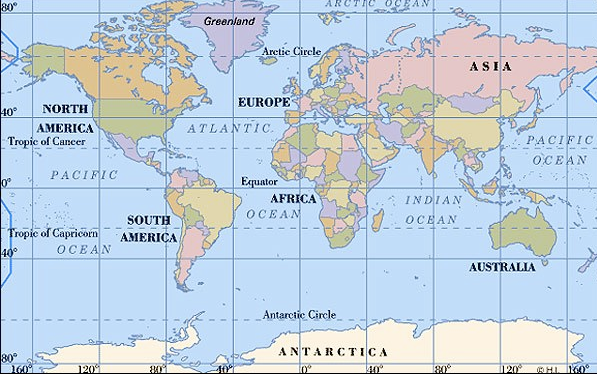ELL Level 1 Social Studies (High School)

-
Students will study Geography and language in this course. Below are the language standards and U.S. History units that we will study this year:
Overarching ELL Standards for Every Unit:
WIDA ELP Standard #1: ELL students will communicate for Social and Instructional purposes within the school setting.
WIDA ELP Standard #5: ELL students will communicate information, ideas, and concepts necessary for academic success in the content of Social Studies
Overarching Common Core Language Standards for Every Unit:
Conventions of Standard English:
- Demonstrate command of the conventions of Standard English grammar and usage when writing or speaking.
- Demonstrate command of the conventions of Standard English capitalization, punctuation, and spelling when writing.
Knowledge of Language:
- Apply knowledge of language to understand how language functions in different contexts, to make effective choices for meaning or style, and to comprehend more fully when reading or listening.
Vocabulary Acquisition and Use
- Determine of clarify the meaning of unknown and multiple meaning words and phrases by using context clues, analyzing meaningful word parts, and consulting general and specialized reference materials, as appropriate.
- Demonstrate understanding of figurative language, word relationships, and nuances in word meanings.
- Acquire and use accurately a range of general academic and domain-specific words and phrases sufficient for reading, writing, speaking, and listening at the college and career readiness level; demonstrate independence in gathering vocabulary knowledge when encountering and unknown term important to comprehension or expression
-
Topic
Time Frame (Estimated)
Power Standard
Language and Skills Targeted
Tools of a Geographer: Mapping skills
September & October
The student will use maps, globes, geographic information systems and other sources of information to analyze the natures of places at a variety of scales
Taking Cornell Notes
Follow teacher read directions to locate items and places
Map vocabulary: compass rose, grid square, map key, map scale, border, symbols, directions
Prepositions
Ask and answer questions for clarification
Directions: North, south, east, west, up down, left, right, below, above,
Imperative form of direction giving: “Take a…”, “Go one block…”
Landforms & Bodies of Water
November
The student will identify and locate major physical and cultural features that played an important role in the history of the U.S.
Take Cornell notes to help comprehend the information
Landforms and Bodies of Water vocabulary: hill, mountain, hilltop, base, slope, peak, foot, knoll, base, peak, island, volcano, lava, ash, gas, desert, habitat, plain, canyon, valley, oceans, lakes, rivers, source, streams, mouth etc.
Comparatives & superlatives
Continents & Oceans
December
The student will demonstrate how various regional frameworks are used to analyze the variation in culture and human’s occupation of the Earth’s surface.
Follow and give directions to locate items and places
Continents & Oceans vocabulary: globe, continent, ocean, North America, South America, Africa, Europe. Asia, Australia, Antarctica, Arctic Ocean, Atlantic Ocean, Pacific Ocean, Indian Ocean
Comparatives & Superlatives
And, or, but
Same & Different
United States: Great Plains, Mountain states, Pacific Region, Southwest
January
The student will identify and locate major physical and cultural features that played an important role in the history of the U.S.
Comparatives & Superlatives
And, or, but
Same & Different
United States: Southeast, Mid-Atlantic, New England
February
The student will identify and locate major physical and cultural features that played an important role in the history of the U.S.
Verb Phrases
Word Order
Compound Sentences
Synthesizing
Identifying
Reading circle graphs
Recognizing Chronological order
Asia
March
The student will demonstrate how various regional frameworks are used to analyze the variation in culture and human’s occupation of the Earth’s surface.
Multiple meanings
Telling how much
This, that, these, those
Summarizing
Evaluating
Africa
& Europe
April
The student will demonstrate how various regional frameworks are used to analyze the variation in culture and human’s occupation of the Earth’s surface.
Verb phrases
Confusing word pairs
Comparative adverbs
Infinitives
Comparing
Explaining
Finding causes in history
Latin America
May
The student will demonstrate how various regional frameworks are used to analyze the variation in culture and human’s occupation of the Earth’s surface.
Figurative language
Multiple meanings
Homophones
Phrases with “who and that”
Passive verbs






